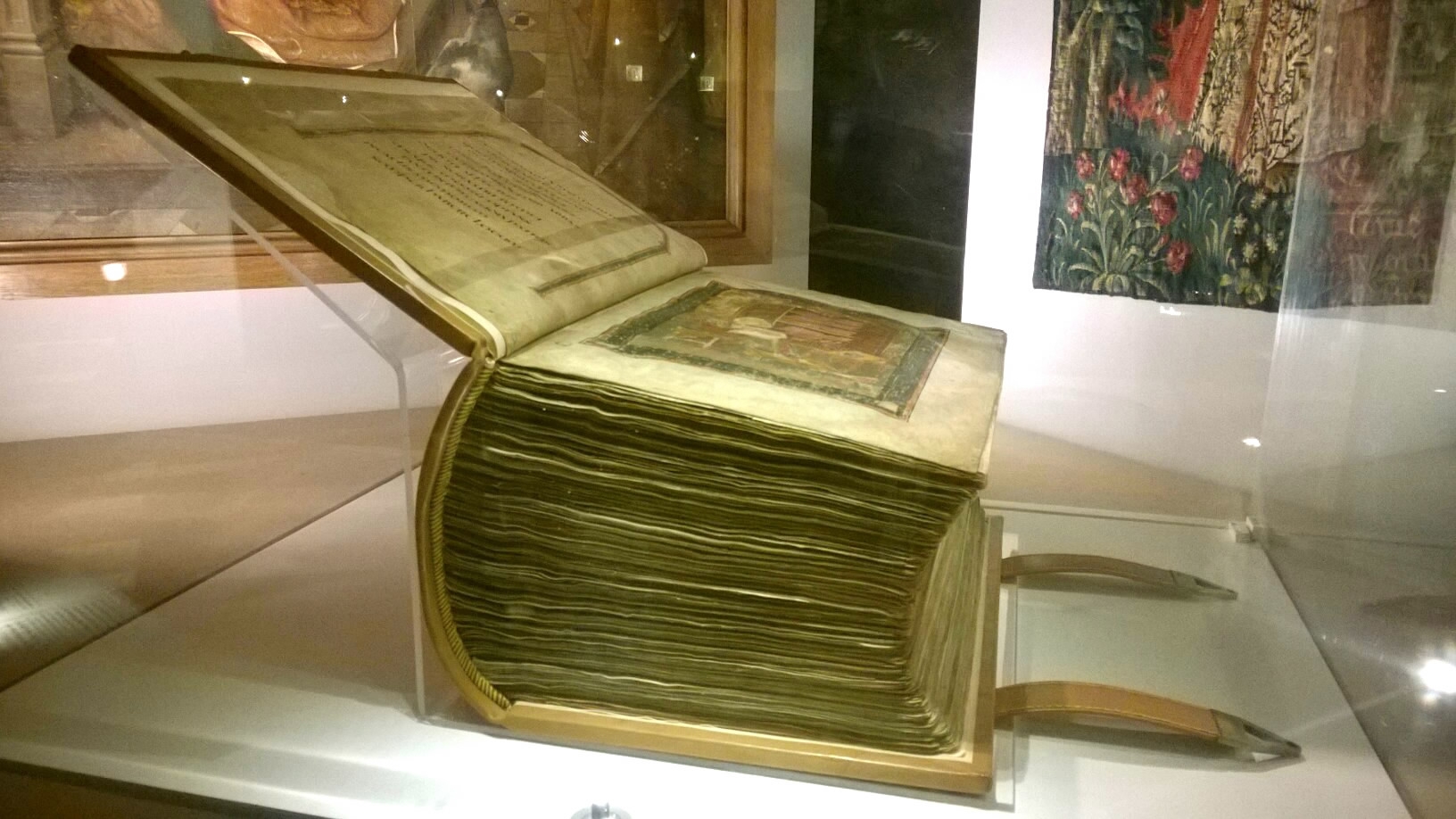
Culture
08:19, 03-Dec-2017
Codex Amiatinus bible returns to England for first time in 1300 years
CGTN

A bible that is half a meter thick and made from the skin of 500 animals is to return to England, the country where it was made, for the first time in 1300 years, the British Library said on Saturday.
The bible, known as the Codex Amiatinus, was created by monks in northern England in the early part of the eighth century and then taken as a gift for The Pope in what is now Italy.
It has remained there ever since - more than 1,000 years - first in a monastery and then, since the 18th century, in a library in the northern Italian city of Florence.
The bible, bound in leather and containing all the books of the bible written on the hides of sheep and cows is set to return in order to be the centerpiece of an exhibition at the British Library in London.
"It is the earliest complete manuscript of the bible in Latin," Dr Claire Breay, head of medieval literature at the British Library, told Xinhua on Saturday.

Codex Amiatinus /Photo via tenthmedieval.wordpress.com
Codex Amiatinus /Photo via tenthmedieval.wordpress.com
It was made in Northumbria in northern England in the eighth century, as one of the three giant bibles that the abbot of the monastery at Wearmouth-Jarrow commissioned, said Breay.
The bible was written out in hand, letter by letter, by a team of monks who would have labored for months under the leadership of head abbot Ceolfrith. As a consequence, few bibles were ever produced and the ravages of time mean that even fewer are left.
Bound copies of the whole bible were very rare because it was huge. "They produced these three giant bibles. One has been completely lost, one [...] a few leaves survive which we have in the British Library and the other survived intact in Italy," said Breay.
The bible is written not on paper but on vellum, which is made from the stretched and processed hides of cows and sheep. This is durable and hard-wearing but also much bulkier than paper, meaning that the leather bound bible is both half a meter tall and weighs 34 kg.
"It is an incredible thing. It has over 1000 leaves [of vellum], requiring the skins of more than 1000 animals in it. The spine of the book is almost 15 centimeters thick," Breay said. "It is one of the greatest treasures to survive from Anglo-Saxon times but probably one of the least known."
(Cover photo via medievalhistories.com)
Source(s): Xinhua News Agency

SITEMAP
Copyright © 2018 CGTN. Beijing ICP prepared NO.16065310-3
Copyright © 2018 CGTN. Beijing ICP prepared NO.16065310-3